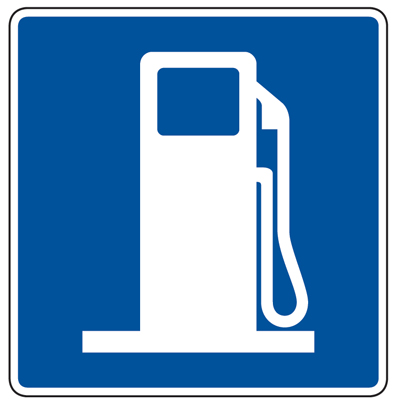WHY PAY FOR PREMIUM GAS?
Do you spend $200 every year on octane you don’t need?

To rein in budget busting gas prices maybe you need look no further than the button you press to pick a grade at the pump. If you usually fill up with high priced, high octane gas you could save $6 or more per fill up by switching to good old 87 octane regular. You’ll notice a difference in your credit card statement, but probably not in the way your car behaves.
According to AAA’s most recent statewide Fuel Gauge Report, premium gas costs 31 cents more per gallon than regular; midgrade, about 23 cents more. Despite their higher costs in a time of rising overall gas prices, premium and midgrade still account for roughly 17 percent of the market according to the U.S. Energy Information Agency. Some people opt for higher octane gas because the owner’s manual tells them to use it in their cars. (Actually, carmakers recommend premium gas for only about 5 percent of all models.) Other folks buy premium because they believe it gives them better mileage or more power. Still, others splurge on an occasional tankful as a treat for their car, much the way you might indulge your dog with a juicy morsel of steak every now and then. Unfortunately, all these reasons will waste your money.
What Premium Really Means
The misconceptions about premium gas begin with its name. Despite its connotations, “premium” doesn’t mean higher quality. It just means higher octane, and octane just measures how fast fuel burns. The higher the octane, the slower the burn.
Burn rate used to matter a lot because automotive engineers recognized it as the easiest way to control engine knock—premature ignition of the fuel air mixture inside the cylinders. Where this occurred, you’d hear a sound like marbles inside an empty coffee can whenever you climbed a hill or accelerated hard. Occasional knocking is no big deal but prolonged knocking can seriously damage an engine. So experts recommended higher octane, slower burning gas to control it, especially as cars aged.
By the late ’90s, however, computer controlled engines with anti-knock sensors became the norm. “On all cars these days, you have sensors and computers to control how much fuel is delivered and when it’s ignited,” says Bart Jenks, manager of Conlon Automotive in North Massapequa, N.Y. “And for almost all cars, they’re set to perform on regular, 87 octane unleaded.” If sensors detect knocking, the computer simply commands the engine to retard the spark—and bye bye knock.
“You won’t get any benefit from using premium in an engine designed for regular unleaded,” says Jack Gregory of Jack’s Auto Service in Wassaic, N.Y. It won’t keep your engine cleaner, because federal law requires all grades of gasoline to have sufficient detergents. It won’t give your car more power or pep because the sensors and computer control fuel delivery and ignition.
And it won’t give you better fuel economy—at least, not enough for you to notice and certainly not enough to justify its higher price. Although premium gas traditionally has a slightly higher heating value (which usually translates to a few more miles per gallon) than regular, the American Petroleum Institute admits that the difference “is difficult to detect in normal driving.” Frankly, several other factors—including the temperature at which you pump your gas—affect the energy content in a gallon of fuel just as much, if not more, than the difference between premium and regular.
Recommendations vs. Requirements
Simply put, using premium in an engine designed for regular wastes money. But what if you own one of the models in the 5 percent of the market for which carmakers recommend premium? Can you get away with using regular or midgrade to save a few bucks at every fill up? Ask your dealer first. He might tell you that regular unleaded will work just fine. In many such cars, there’s a difference between a recommendation and a strict requirement.
You certainly won’t do serious damage to your engine. After all, the computer will simply retard the spark to prevent knocking with a lower octane fuel. “Honestly, I don’t think you can tell a difference,” says Jim Roldos, head mechanic at Klis Brothers Auto & Tire in East Northport, N.Y. “People with BMWs and other cars like that use regular all the time and never have any problems.” In fact, none of the technicians in the AAA Approved Auto Repair shops interviewed for this story could recall ever working on a modern engine damaged by using lowoctane gas instead of recommended premium.
Opting for 87 octane regular might result in a slight loss of performance, but probably not enough that you’d notice in everyday driving. Some experts confide that car makers recommend premium in certain high performance machines only so that they can tout a higher horsepower rating for marketing purposes. “They recommend premium largely to promote performance,” says Roldos. “If you run it on 87, you won’t have problems.”
The bottom line is simple. If your car specifies regular gas, use it. And if your owner’s manual recommends premium, ask your dealer whether it really matters. You can probably use regular anyway, and you’ll notice the difference only in your wallet.
© 2015 TLC Magazine Online, Inc. |